Charles Lamb:
An Inventory of His Collection at the Harry Ransom Center
| Creator: | Lamb, Charles, 1775-1834 | |
| Title: | Charles Lamb Collection | |
| Dates: | 1801-1834 | |
| Extent: | 5 boxes, 1 oversize folder (osf) (1.97 linear feet) | |
| Abstract: | The Charles Lamb Collection consists primarily of handwritten manuscripts, Lamb's fair copies of works by others, and outgoing correspondence from Lamb and his sister Mary. | |
| Call Number: | Manuscript Collection MS-02366 | |
| Language: | English |
| Access: | Open for research |
Administrative Information
| Acquisition: | Gift (Stark Collection, 1925) and purchase (Hanley Collection, 1964) | |
| Processed by: | Jamie Hawkins-Kirkham, 2010 |
| Repository: |
Biographical Sketch
| Charles Lamb was born in London on February 10, 1775, to John and Elizabeth Field Lamb. In October 1787, he began his education at Christ's Hospital where he met his life-long friend, Samuel Taylor Coleridge. Christ's Hospital was intended to prepare boys for a university education followed by taking orders in the Church of England. However, Lamb's stammer caused him to leave school early and find work first as a secretary to the businessman Joseph Paice, then as a clerk at the East India Company where he would remain for thirty-three years. After Lamb left school, he met Ann Simmons, the inspiration for some of his earliest poetry, which was first published in the 1796 edition of Coleridge's Poems. | ||
| In September 1796, tragedy struck the Lamb family when Mary, Lamb's elder sister who had a history of mental instability, killed their mother. She was judged temporarily insane and sent to Hoxton Asylum. To prevent her permanent confinement in a mental institution, Charles made the decision to devote his life to his sister's care. While her illness did necessitate occasional periods of confinement, Mary was able to lead a somewhat normal life under the care of her brother, with whom she lived and even helped to write children's literature. | ||
| For a time, Lamb took a break from writing to focus on caring for his sister, but he soon took it up again, and in June 1797 contributed fifteen poems to Samuel Taylor Coleridge's Poems, Second Edition. Lamb continued to write poetry throughout his life, but he also began to try his hand at theater, novel writing, children's literature, and journalistic writing. He wrote plays, including John Woodvil, a tragedy in Shakespearean blank verse, but he turned increasingly to prose, the earliest example of which is his novel A Tale of Rosamund Gray (1798). | ||
| In 1820, Lamb began writing essays under the pseudonym Elia for London Magazine. These essays, for which Lamb is best known, were published as Elia (1823) and The Last Essays of Elia (1833). In 1823, Charles and Mary moved to Colebrooke Row in Islington where they adopted Emma Isola, whom they had met in Cambridge when she was nine. In the following years, Lamb was able to retire from the East India Company, but despite his new freedom, Lamb wrote less in the last decade of his life. He died on December 27, 1834. | ||
Sources:
| Courtney, Winifred F. "Charles Lamb." Dictionary of Literary Biography, http://galenet.galegroup.com/servlet/GLD/ (accessed 29 October 2010). | ||
| Swaab, Peter."Lamb, Charles (1775-1834), Essayist." Oxford Dictionary of National Biography, Oxford University Press, 2004, http://www.oxforddnb.com/view/article/15912 (accessed 29 October 2010). | ||
Scope and Contents
| The Charles Lamb Collection consists primarily of handwritten manuscripts, Lamb's fair copies of works by others, and outgoing correspondence from Lamb and his sister Mary. The collection is arranged in two series, I. Works, 1804-1825, undated, and II. Outgoing Correspondence, 1801-1834. Part of this collection was previously accessible through a card catalog but has been recataloged as part of a retrospective conversion project. | ||
| The Works Series is subdivided into Lamb's works, Lamb's fair copies, and other papers. Lamb's works consist of an acrostic, a biblical question game, a lesson in English grammar, and numerous poems and essays. Also included is a commonplace book with poems, epitaphs, excerpts, and acrostics. Lamb's fair copies consist of Lamb's handwritten copies of the poetry of authors such as Samuel Taylor Coleridge, Charles Valentine Le Grice, Andrew Marvell, Thomas Overbury, Matthew Prior, William Strode, Thomas Tickell, Edmund Waller, and George Withers. The final item in the series is a photostat regarding Lamb by an unidentified author. | ||
| The Outgoing Correspondence Series consists of letters sent by Lamb and his sister, Mary. The letters are subdivided by author and then arranged by recipient and date. The bulk of the letters are written to William Wordsworth. Other recipients include Samuel Taylor Coleridge, Sarah Hazlitt, Charles Ollier, John Howard Payne, John Rickman, Dorothy Wordsworth, and Mary Wordsworth. Included with each letter is a typewritten transcript. | ||
Related Material
| Additional manuscript material regarding Lamb is located in several other collections at the Ransom Center. One undated letter to Lamb from Samuel Taylor Coleridge is located in Coleridge's papers. Other collections containing Lamb-related materials are Harry Smith Bache, Edmund C. Blunden, E. V. Lucas, Joanna Richardson, and the Robert Spradlin Collection of Charles Lamb Research Papers. Some editions of Charles Lamb's works are located in the Library; the Performing Arts Prints Collection contains an image of Lamb; and the Vertical File contains information about Lamb in the Edmund Blunden and Christopher Morley files. | ||
| There are significant collections of Lamb manuscripts in the Henry E. Huntington Library, the New York Public Library, the Pierpont Morgan Library, the British Library, and libraries at Harvard University, Yale University, Princeton University, and the University of Kentucky. The Charles Lamb Society Library, which holds some autograph items, is now housed in the Guildhall Library, London. | ||

